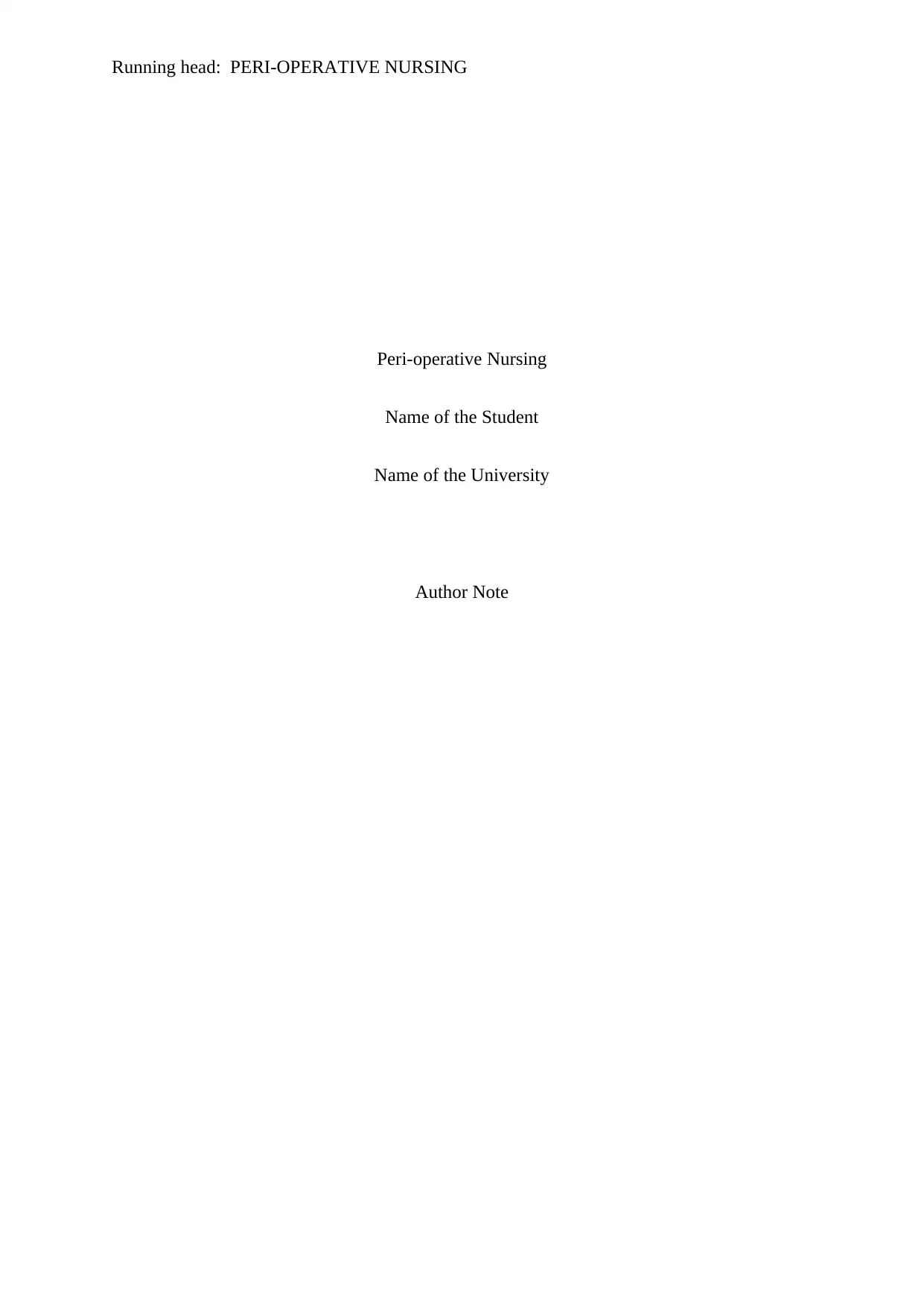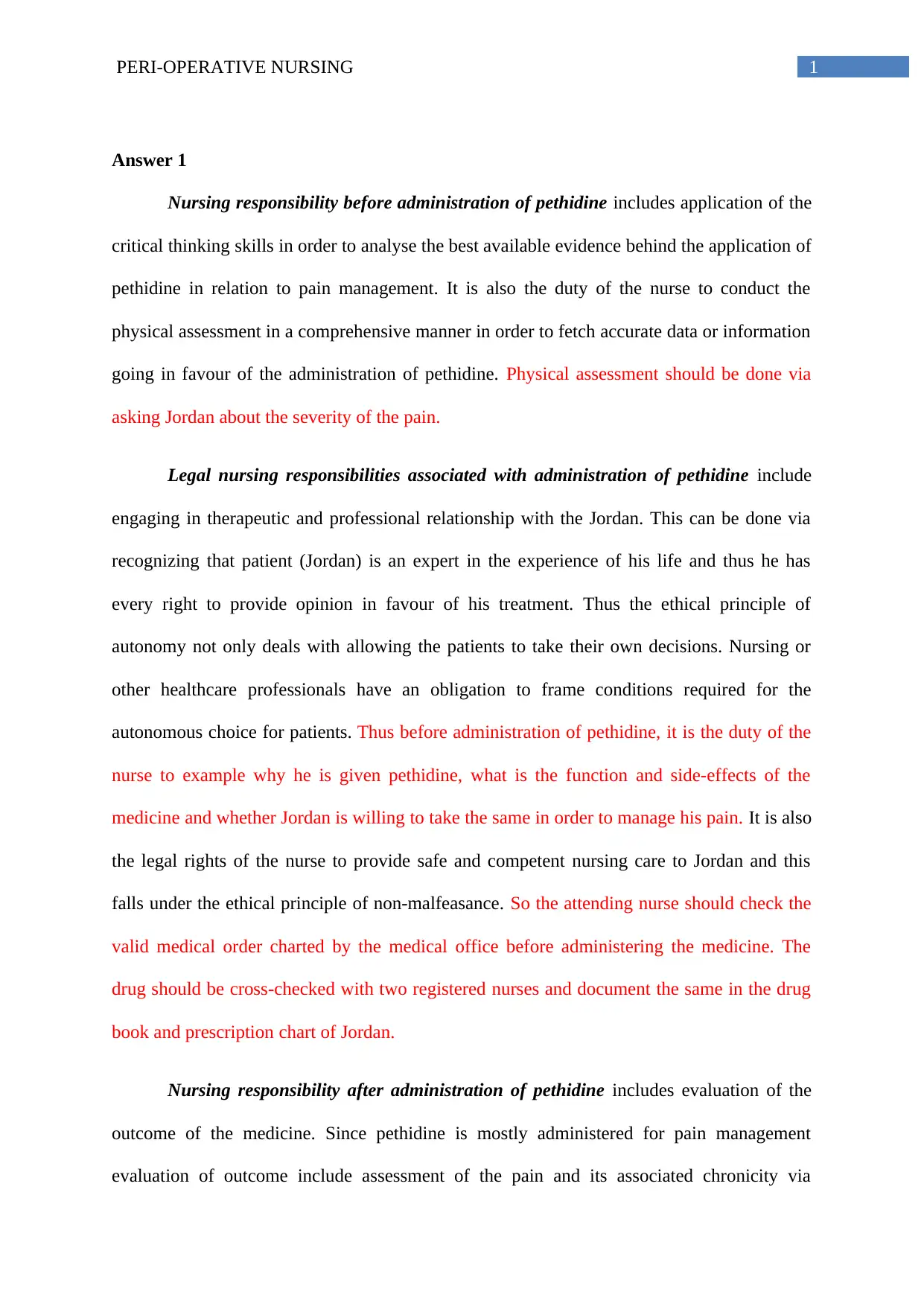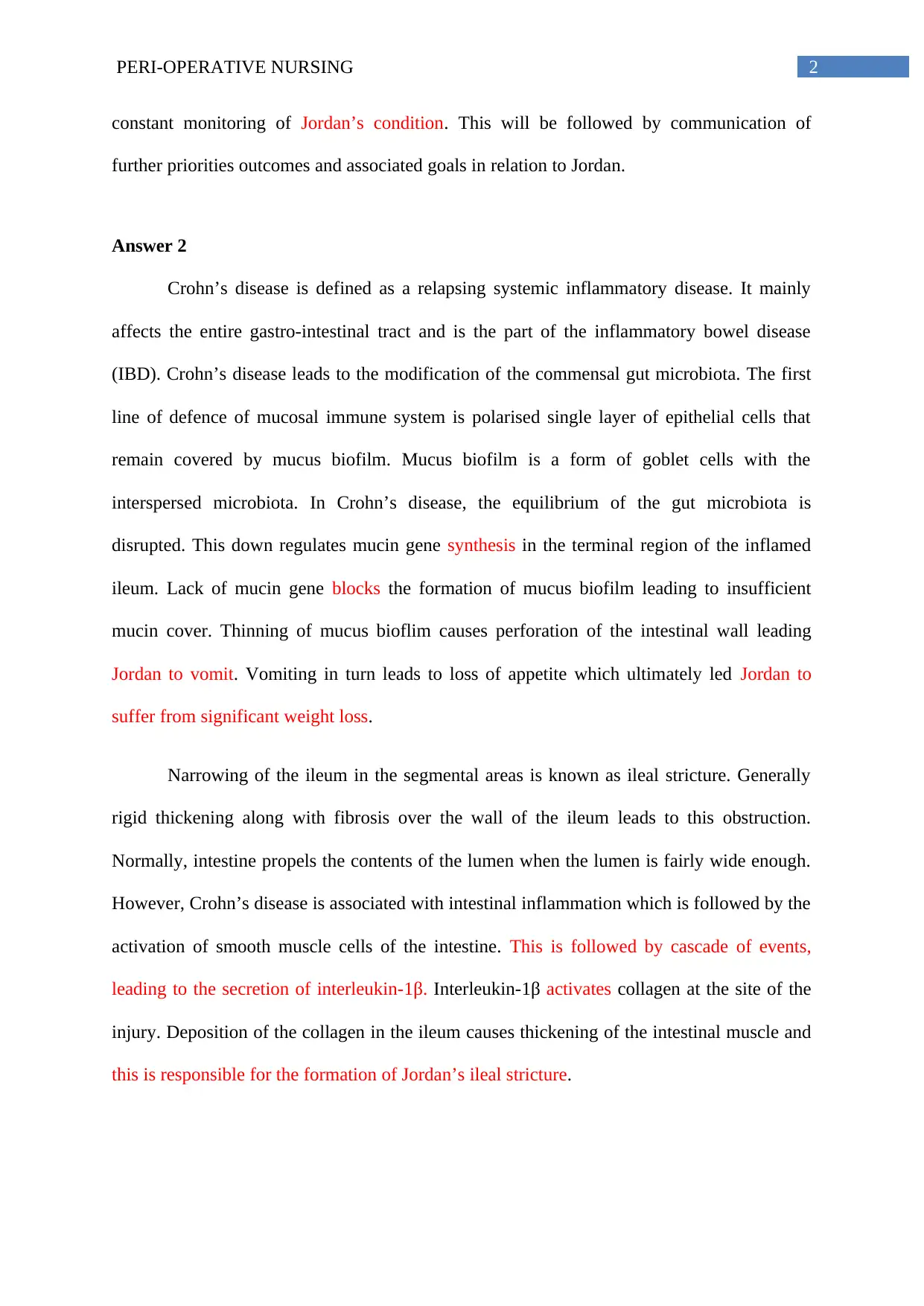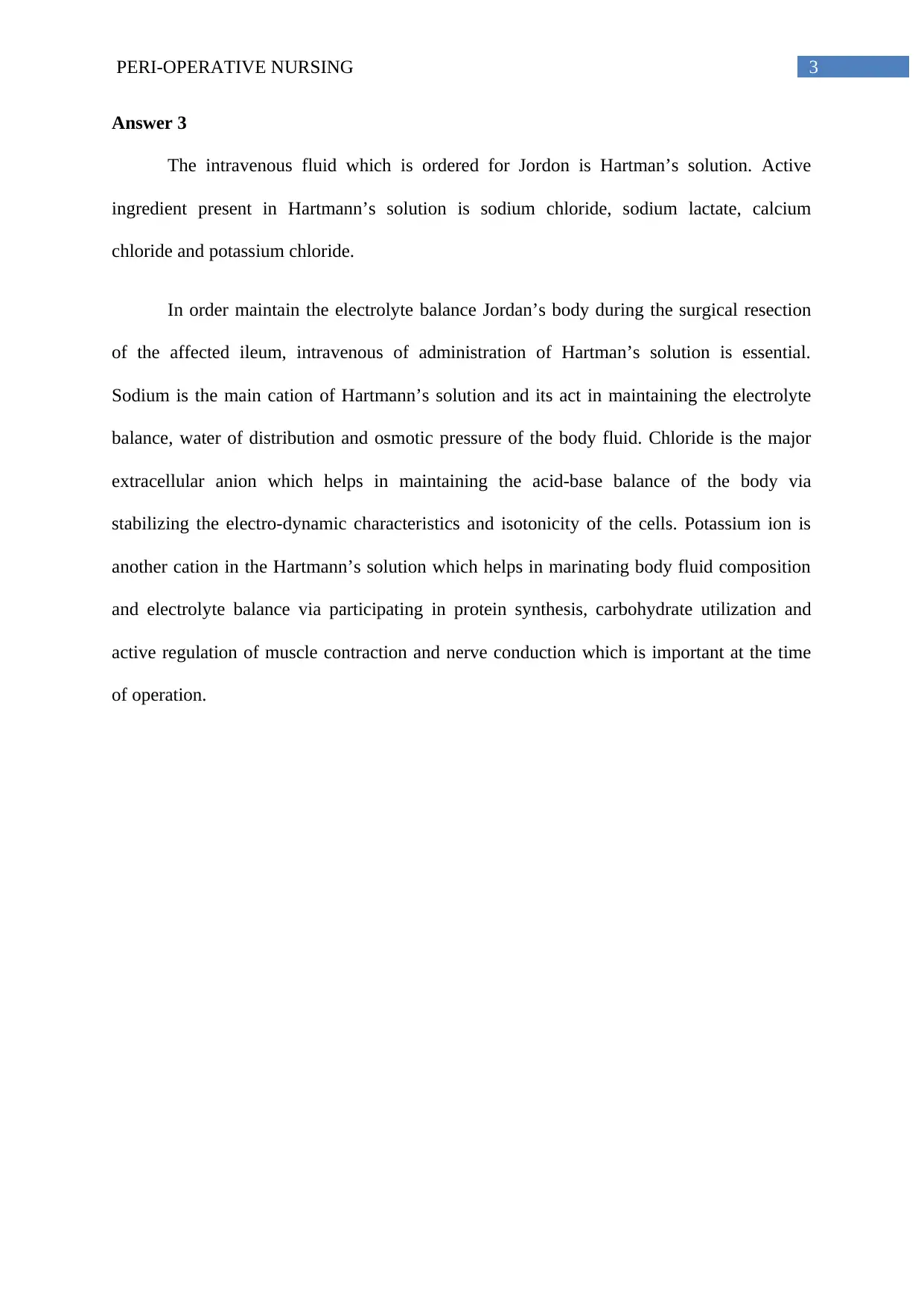Peri-operative Nursing Assignment: Pethidine, Crohn's, and IV Fluids
VerifiedAdded on 2021/04/17
|4
|835
|70
Homework Assignment
AI Summary
This assignment solution delves into peri-operative nursing, addressing key aspects of patient care. It begins by outlining nursing responsibilities before and after the administration of pethidine, emphasizing critical thinking, physical assessment, legal and ethical considerations, and outcome evaluation. The solution then explores Crohn's disease, explaining its pathophysiology, including the disruption of gut microbiota, thinning of the mucus biofilm, and the formation of ileal strictures. Finally, the assignment discusses the intravenous fluid Hartmann's solution, detailing its active ingredients (sodium chloride, sodium lactate, calcium chloride, and potassium chloride) and their roles in maintaining electrolyte balance during surgical procedures. The solution highlights the importance of these considerations in providing comprehensive peri-operative care.
1 out of 4





![[object Object]](/_next/static/media/star-bottom.7253800d.svg)